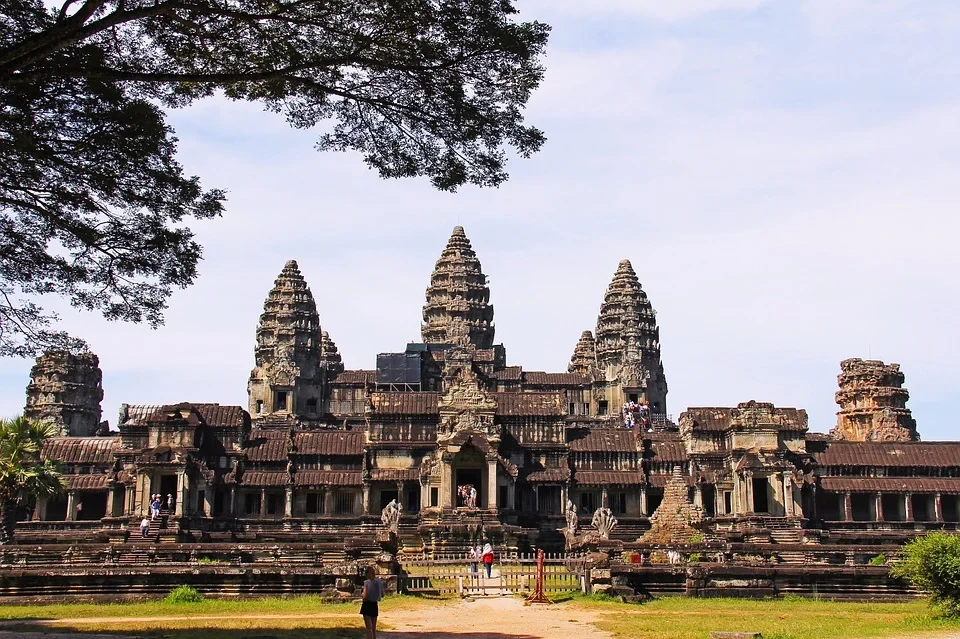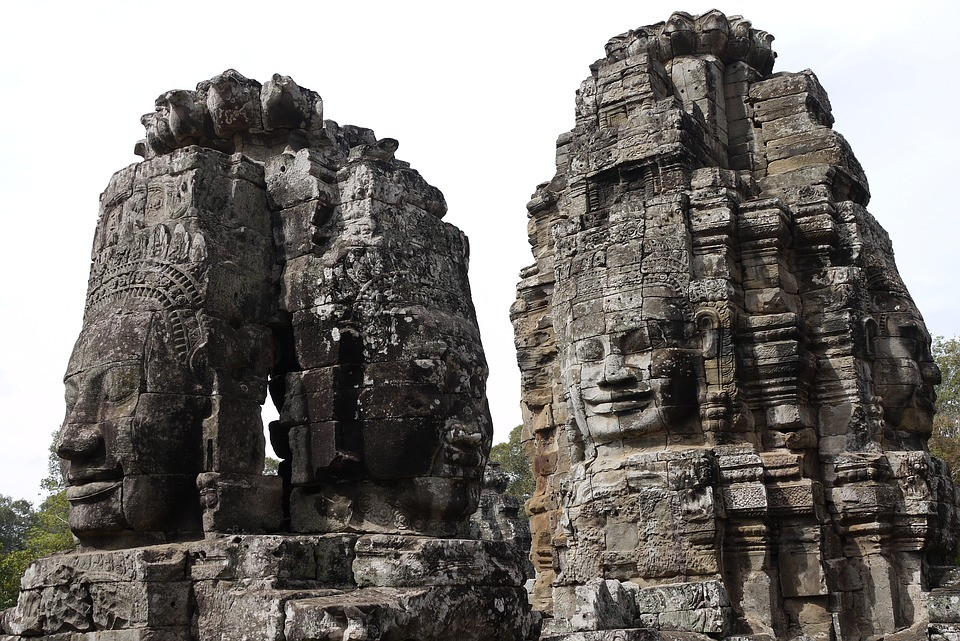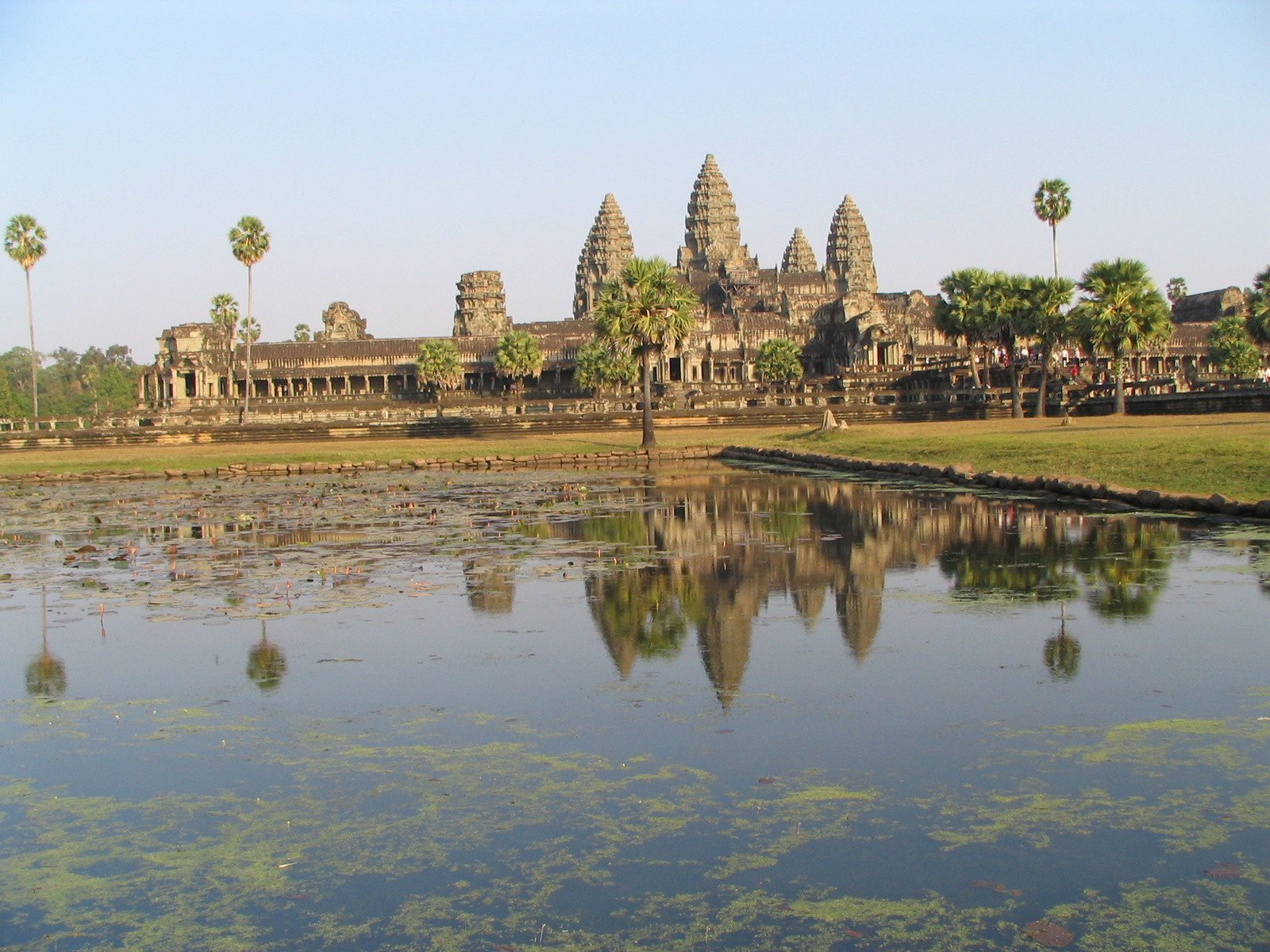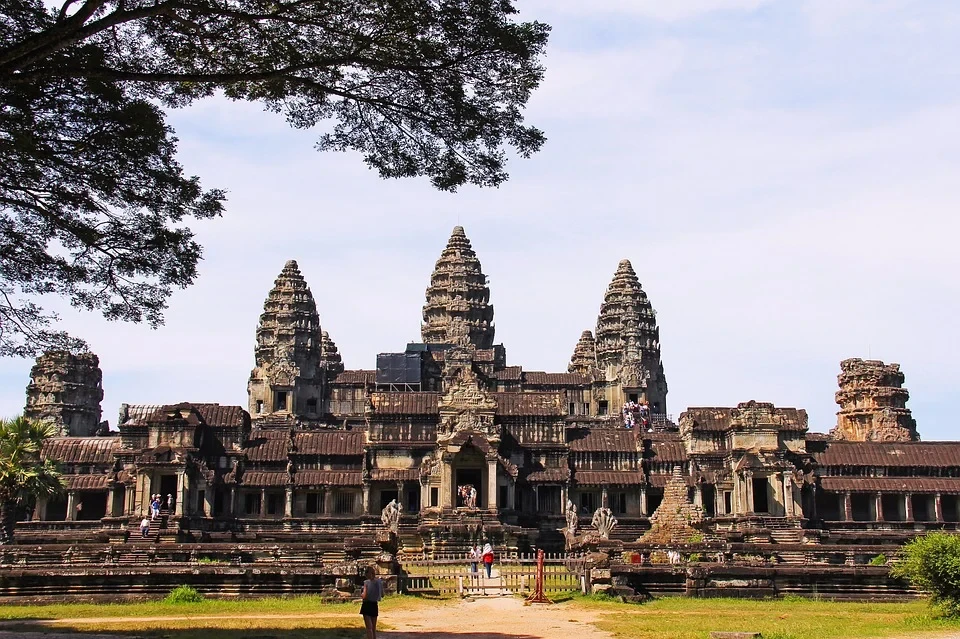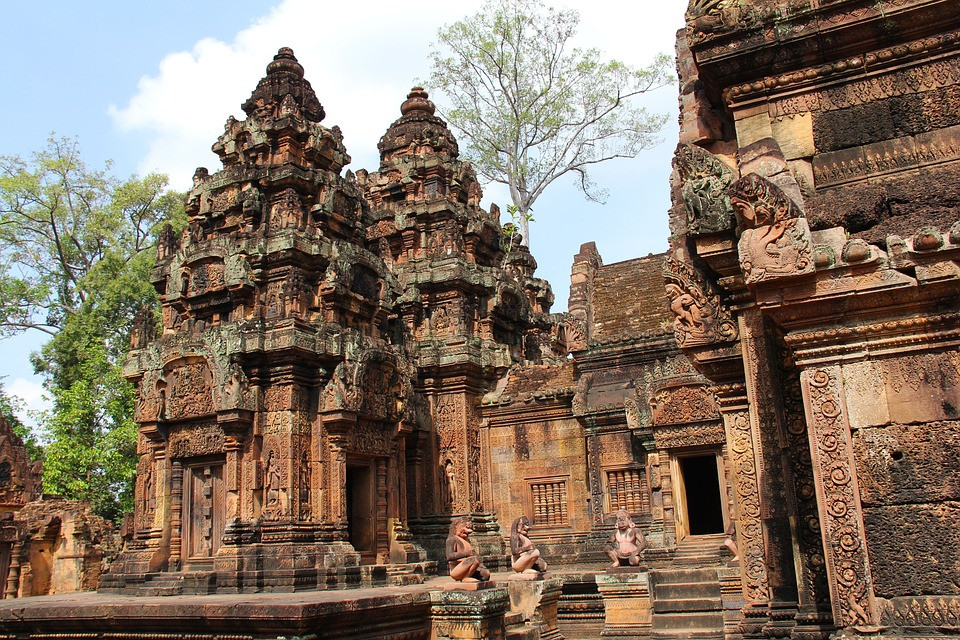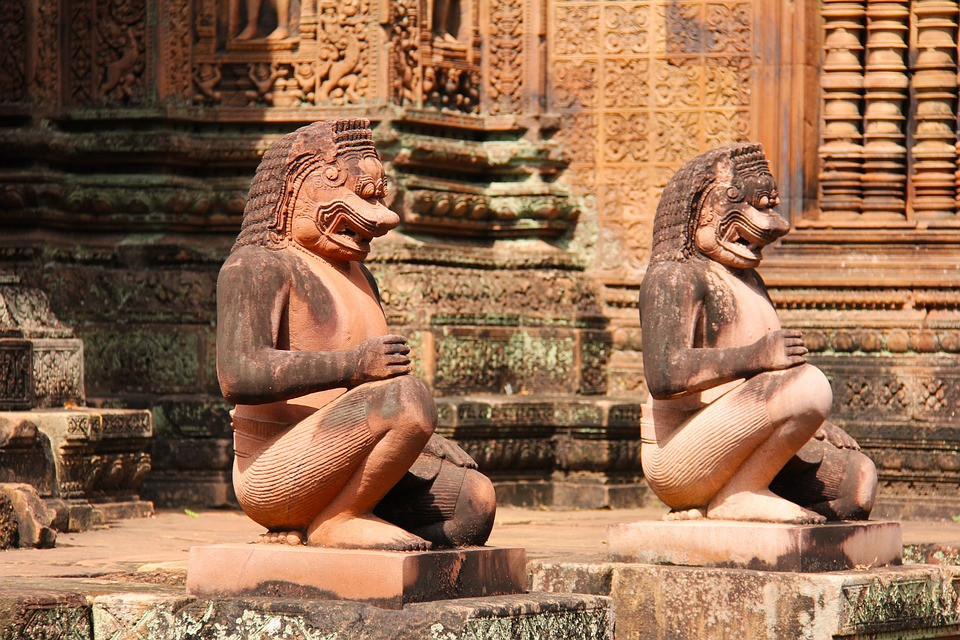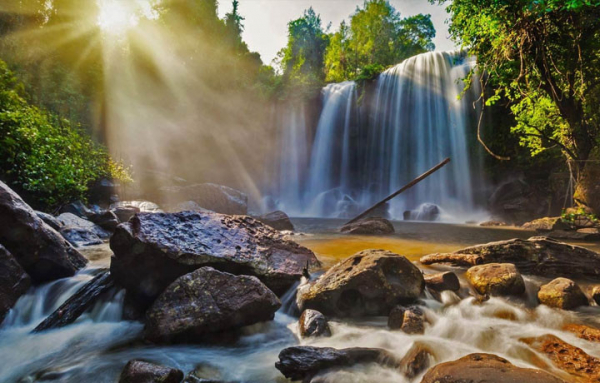Siem Reap is the entryway to Angkor Wat, the Khmer Empire's millennium-old temple ruins. This modest provincial capital, located along the Siem Reap River, offers hundreds of tourist options, including well-preserved colonial structures, museums, traditional markets, and cultural events. Following its quick expansion, the bustling town now has all of the amenities that seasoned international travelers would expect.
Best time to visit
The months of December and January are ideal for visiting Siem Reap since the weather is dry and temperate. However, because it is peak tourist season, everything will be more congested and costs will be higher. You can visit Cambodia/Angkor during the monsoon/wet season for a less crowded trip (between June and November). It will rain, and it will rain heavily at times, but the monsoon rains are quite predictable and controllable. The country is at its best at this time of year, with visitor numbers down and lodging readily accessible.
Siem Reap's attractions
- Angkor Archaeological Park
The Angkor Archaeological Park contains the famed Angkor Wat at Siem Reap, as well as 50 Hindu and Buddhist temple structures built between the 9th and 12th centuries. This park, which was once the world's biggest pre-industrial metropolis and was designated as a UNESCO World Heritage site in 1992, represents the peak of ancient Khmer architecture, art, and culture. The multi-day permits are recommended for visitors who want to explore the full Angkor Archaeological Park because there are so many things to see.
Ta Keo is a massive temple-mountain complex made of massive sandstone blocks. The temple is devoted to the Hindu god Shiva and appears to have been crowned with golden towers, as the mountain with golden peaks was called in ancient times.
- Terrace of the Leper King
Nagas, devils, and other mythological monsters are carved into the Terrace of the Leper King. It's located on the Terrace of Elephants' north end. The inner wall was constructed first, followed by the outside wall, which covered the inner wall. The inner wall was excavated in the late 1990s by archaeologists.
The Roluos Group of Temples is a 9th-century collection of temples called after Roluos, a nearby village. The site is located on National Highway No. 6 east of Siem Reap. Hariharalaya, the Khmer Empire's first important capital, is represented by this assemblage of ancient structures. It served as the Khmer capital for more than 70 years, during the reigns of four kings.
Thommanon is a modest, attractive temple that was built at the same time as Angkor Wat. It is still in good shape now because to considerable restoration work done in the 1960s. The various sculptures of Thommanon are likewise in excellent shape, and the color of the wet sandstone helps them stand out even more during the rainy season, providing excellent photographic opportunity.
Banteay Chhmar is a little out of the way from Siem Reap, which means it's not overrun with tourists. The temple was constructed under King Jayavarman VII's massive building program and is dedicated to his son, who died battling the Cham in battle. In the many bas-reliefs here, you may view various Khmer and Cham battle scenes.
Banteay Samre is a huge, low-rise temple designed in the Angkor Wat style of architecture and art. It was constructed at the same time as Angkor Wat, and the towers and railings bear a striking resemblance to those of its more renowned cousin. The temple also has a strong resemblance to Thailand's ancient Khmer temple of Phimai. The majority of the bas-relief carvings are in excellent shape. Archaeologists significantly renovated the temple by totally dismantling it and then reassembling it.
- Baray Lakes and the Mebon Temples
The massive Baray lakes are one of Angkor's most impressive features. They are massive ancient rectangular artificial reservoirs, the two largest of which are located to the east and west of Angkor Thom, respectively. The East Baray is 14 square kilometers in size, whereas the West Baray is 16 square kilometers. On an island in the middle of each lake, there stands a stone temple known as a Mebon.
King Suryavarman II built Chao Say Tevoda between AD 1120 and 1150, and it is a tiny, elegant Hindu temple. It contains a central shrine, two libraries, and four gopuras, one for each of the four cardinal directions. The temple's restoration began in 2000 and was finished in 2009. The repair includes freshly made sections that were not of the same artistic quality as the original sections, but visitors may still see the temple as it was built.
Near Angkor Thom, the North Khleangs are a group of rectangular sandstone buildings. One Khleang is east of the Elephant Terrace, while the other is east of the Leper King Terrace. The word 'khleang' means'storeroom,' but it's unlikely that they were ever used for that. It's unclear what they were used for, but carved inscriptions suggest they were likely utilized for ceremonial purposes or as lodging for visiting dignitaries.
The tallest climbable temple in Angkor Thom is Phimeanakas, a massive, tiered pyramid of laterite and sandstone masonry. It provides a good perspective of the surrounding area from the summit.
Pre Rup is a massive temple-mountain with well-preserved fine-detail carvings. This beautiful temple, which is located just south of the East Baray and is comparable in construction to the East Mebon, which was completed a few years earlier, is architecturally and artistically great. The false doors on the upper level are particularly well-made.
The magnificent Preah Vihear Temple is one of Angkor's more remote temples. To get there, you'll have to travel nearly 100 kilometers north-east of Angkor, to the Thai border. The Preah Vihear Temple (or Prasat Phra Viharn) was built in the early 11th century.
Srah Srang, to the east of Banteay Kdei, is a small yet beautiful Baray (ancient reservoir). It was built in the same style as Pre Rup and was renovated in the 12th century as part of King Jayavarman VII's construction program. The vestiges of a mebon or temple can be seen in the middle of the reservoir, just peeking out above the water, during the dry season when the water level is low. Srah Srang is a popular alternative to Angkor Wat for sunrise viewing because it is much less crowded.
At Phnom Kulen, Kbal Spean is the well-known river of 1,000 lingas. These lingas (phallic symbols) were apparently carved into the river's bedrock in order to 'fertilize' the waters flowing to Angkor's farms. In addition to the lingas, there are carvings of Buddha and Buddhist motifs in the rocks that date slightly later than the lingas. To get to the river, take a 45-minute trek uphill through the forests.
- Phnom Kulen National Park
The most sacred mountain in Cambodia is thought to be Phnom Kulen National Park, located 45 kilometers north of Siem Reap. Over 55 ancient temple remains may be seen at the peak of Kulen Mountain, as well as a 16th-century Buddhist pagoda and an 8-metre-long sandstone statue of a reclining Buddha. The two spectacular waterfalls that are the focal point of Phnom Kulen are accessible to visitors. The waterfalls, which feature multi-tiered boulders and flowing waters, are ideal for swimming, picnicking, and taking wonderful photos.
The Angkor National Museum, which displays 1,000 relics from the ancient Khmer Kingdom, opened in 2007. The museum houses items from the Funan and Chenla eras, as well as Angkor Wat and Angkor Thom, stone tables with numerous Sanskrit and Old Khmer inscriptions, and traditional kings', queens', soldiers', and Apsara dancers' costumes.
In this modest museum in Siem Reap, you may see smaller copies of Angkor's temples. Dy Proeung built the miniature of Angkor Wat, Banteay Srey, and other ancient temples in 1994 and 1995, and you can see how much work and effort went into it.
Aki Ra founded this museum in 1997 with the goal of making the country safer by removing mines from wherever he could find them. The Khmer Rouge forced Aki Ra to work as a mine layer at the age of five. Now he is working to have them removed and to establish a museum to both showcase his efforts and educate visitors on the dangers that Cambodian people face on a daily basis.
Outdoor displays of old, rusted, and broken-down military weaponry salvaged from the battlefield may be found at the War Museum Cambodia. Old tanks, artillery pieces, rocket launchers, anti-aircraft guns, small arms, mines, and bombs are among the items on display.
- Banteay Srey Butterfly Center
Banteay Srey Butterfly Centre (BBC), about 25 kilometers from Siem Reap, is one of Cambodia's most popular tourist destinations and home to one of Southeast Asia's largest butterfly shows. A visit to the Banteay Srey Butterfly Centre is a wonderful chance to take a break from temple tours and spend some time in beautiful surroundings surrounded by unique and vibrant butterflies.
The Siem Reap Crocodile Farm is a public-access commercial crocodile farm. They have around 1,000 South China crocodiles ranging in age from one year to fifty. They also offer a store that sells crocodile, stingray, and snakeskin leather handbags, wallets, and belts. This is not a zoo, and the crocodiles are only kept for their high-quality hides.
Tonlé Sap Lake, around 15 kilometers south of Siem Reap, is Southeast Asia's largest freshwater lake, making it a valuable natural resource for locals in terms of fishing and wetlands. The best time to go is during the rainy season (June to November), when you can see and photograph authentic floating villages dotting the vast lake. Prek Toal Biosphere Reserve is another must-see at Tonlé Sap Lake, where you may take a guided boat tour around the marshes and lake.
- Cambodian Cultural Village
The Cambodian Cultural Village is a vast facility where visitors can learn about Cambodian traditional lifestyles, beliefs, and customs, as well as the daily lives of the country's various ethnic groups. In 13 adjacent villages, visitors can see live acts including as acrobatics, traditional Khmer wedding ceremonies, Aspara dances, and fishing demonstrations.
Artisans d'Angkor Silk Farm was founded by Artisans d'Angkor, a humanitarian organization based in Siem Reap dedicated to the revival and continuation of Cambodian traditional sericulture. They offer silk production instruction and use the silk they produce in their products. A very good and insightful farm tour covers all aspects of silk farming and production, from raising the silkworms to dying the silk to weaving the finished product.
Wat Damnak Pagoda, located on Wat Bo Road, was once a royal palace during King Sisowath's reign. Within its grounds, it now houses a school, two charities, and a sewing academy for young local women. Enjoy some reading or take a stroll through the verdant garden courtyard, which provides a peaceful respite from the bustling town center.
- Apsaras dance and dinner shows in Siem Reap
Apsara dance shows are performed at a number of restaurants and hotels in Siem Reap, and Apsara dance supper presentations are included in many trips. The typical show time is roughly 2 hours. Apsara Dance, Masked Dance, Shadow Theatre, and Folk Dance are the four traditional Khmer dance styles featured in the majority of performances.

